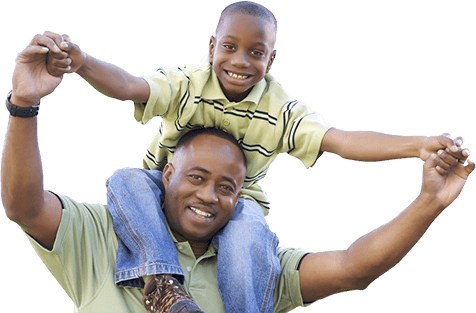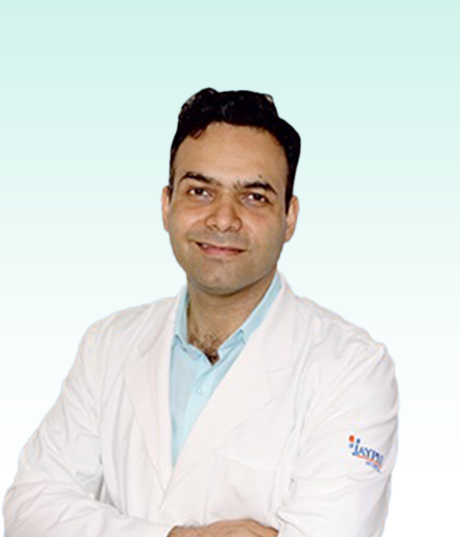Spinal Deformity
Spinal deformity is an abnormal alignment or curve of the bony vertebral column. Adult scoliosis and kyphosis can be caused by age-related wear and tear on the back or complications from past surgeries. Moderate deformity occurs when the facet joints and discs deteriorate over time and are no longer able to support the spine’s normal posture. Pain results from stressed joints and pinched nerves, not the abnormal curve. Treatment can include medications, physical therapy, injections, or surgery.

Who Needs Spinal Deformity Treatment
Individuals who have been diagnosed with spinal deformity, such as scoliosis, kyphosis, or lordosis, may require treatment. Spinal deformities can occur in children, adolescents, and adults. The decision to pursue treatment depends on several factors, including the severity of the deformity, the progression of the condition, the presence of symptoms or functional limitations, and the individual’s goals and preferences.
When to See a Specialist
It is advisable to see a specialist, such as an orthopedic surgeon or spine specialist, if you notice signs or symptoms of spinal deformity, including:
- Visible curvature of the spine
- Uneven shoulder or hip alignment
- Back pain or discomfort
- Limited range of motion or mobility
- Changes in posture or gait
- Breathing difficulties (in severe cases)
- A specialist can evaluate your condition, perform diagnostic tests, and recommend appropriate treatment options based on your specific needs.
Procedure
The specific treatment approach for spinal deformity varies depending on the type and severity of the condition. The steps involved may include:
- Evaluation and Diagnosis: The specialist will review your medical history, conduct a physical examination, and order imaging tests, such as X-rays, CT scans, or MRI scans, to assess the curvature and alignment of your spine and determine the extent of the deformity.
- Treatment Planning: Based on the evaluation, the specialist will develop a personalized treatment plan tailored to your condition and goals. This may involve non-surgical interventions, such as physical therapy, bracing, or pain management, or surgical options if conservative measures are ineffective.
- Non-Surgical Treatment: For mild to moderate spinal deformities, non-surgical treatments may be recommended. These can include exercises and physical therapy to strengthen the muscles supporting the spine, bracing to help stabilize the spine and prevent progression, and pain management techniques to alleviate discomfort.
- Surgical Intervention: In cases of severe or progressive spinal deformities, surgery may be necessary to correct the curvature and restore spinal alignment. The specific surgical procedure will depend on the type and severity of the deformity. Common surgical techniques include spinal fusion, spinal instrumentation (use of rods, screws, or hooks), and osteotomy (removal or reshaping of bone).
- Postoperative Care and Rehabilitation: Following surgery, a period of recovery and rehabilitation is necessary. This may involve physical therapy, pain management, and gradually increasing activities to regain strength, flexibility, and mobility. The specialist will provide guidance on postoperative care and rehabilitation protocols.
- Long-Term Follow-up: Regular follow-up visits will be scheduled to monitor the progress of the treatment, assess the spinal alignment, and make any necessary adjustments or modifications to the treatment plan.
Road to Recovery
The road to recovery from spinal deformity treatment can vary depending on the type of treatment and the individual’s response. Non-surgical interventions may require ongoing rehabilitation and management, while surgical interventions may involve a more intensive recovery period. Physical therapy and rehabilitation play a crucial role in regaining strength, improving posture and mobility, and minimizing pain.
Risk Management
Spinal deformity treatment, especially surgical intervention, carries potential risks and complications. These can include infection, bleeding, nerve damage, blood clots, failure of fusion, implant-related issues, and pain. However, the risks associated with treatment are carefully assessed and discussed with the patient before proceeding. Surgeons take precautions to minimize risks and ensure patient safety.
Benefits of Spinal Deformity Treatment
Spinal deformity treatment aims to provide several benefits, including:
- Improved Spinal Alignment: Treatment helps correct the abnormal curvature of the spine, restoring a more natural alignment.
- Pain Relief: By addressing the underlying cause of pain, spinal deformity treatment can help alleviate discomfort and improve overall quality of life.
- Enhanced Function and Mobility: Treatment can improve posture, balance, and range of motion, allowing individuals to engage in activities with greater ease and efficiency.
- Improved Appearance: Treatment can help improve the cosmetic appearance of the spine, leading to increased self-confidence and self-esteem.
- Prevention of Progression: Early intervention and appropriate treatment can prevent the progression of spinal deformities, minimizing the need for more extensive interventions in the future.
Frequently Asked Questions
Can spinal deformity be corrected without surgery?
Non-surgical treatments, such as physical therapy and bracing, may be effective in managing mild to moderate spinal deformities and preventing progression. However, for severe or progressive deformities, surgical intervention may be necessary to achieve significant correction.
Is spinal deformity treatment only for children?
Spinal deformity treatment is not limited to children. Adults with spinal deformities, such as degenerative scoliosis or kyphosis, may also benefit from treatment. The treatment approach may differ based on the age of the patient and the specific condition.
Will I need to wear a brace after spinal deformity surgery?
The use of a brace after spinal deformity surgery depends on various factors, including the surgical technique used and the individual’s specific condition. Some surgeries may require bracing for a period of time to provide additional support and stability during the healing process.
How long does it take to recover from spinal deformity surgery?
The recovery time after spinal deformity surgery can vary depending on the type of surgery performed, the extent of the deformity, and individual factors. It may take several months to a year or more to fully recover and regain strength, mobility, and function.
Will I be able to participate in sports or physical activities after spinal deformity treatment?
The ability to participate in sports or physical activities after spinal deformity treatment will depend on the specific condition, the type of treatment received, and individual factors. In some cases, modifications or restrictions may be necessary to ensure the safety and well-being of the spine.
Treatment Plans
- Trauma & intensive care $59
- Aged Care $29
- Community Services $25
- Diagnosis & Investigation $48
- Medical & Surgical $82
- Mental Health $74
- Rehabitation $24
- Specialised Support Service $19
- Trauma & intensive care $59
- Aged Care $29
- Community Services $25
- Diagnosis & Investigation $48
- Medical & Surgical $82
- Mental Health $74
- Rehabitation $24
- Specialised Support Service $19
Treatians As The Best Choice
Treatians understand that seeking medical treatment abroad can be a daunting experience for patients and their families. That’s why the company offers end-to-end support to its clients, from the initial consultation to post-treatment care. The company provides personalized treatment plans that are tailored to meet the individual needs of each patient, and its team of dedicated professionals is always on hand to provide guidance and support throughout the entire process. Contact us at +91- 7982312582, drop your email [email protected]
- Trauma & intensive care
- Aged Care
- Community Services
- Diagnosis & Investigation
- Medical & Surgical
- Mental Health
- Rehabitation
- Specialised Support Service
Service Recipient Says


















"I was diagnosed with hypertension and needed expert advice. Treatians helped me find a cardiologist who provided excellent care and a manageable treatment plan. My blood pressure is now under control, and I am very satisfied with the service."
Aisyah Karim Malaysia